Introduction
Flying in first person mode allows the drone pilot to experience the very freedom of flight of a bird that is so often talked about. In order to dive as much as possible and fully experience these incredible sensations, special devices called FPV glasses / FPV helmets have come to our hobby. Years have passed since their first appearance, and as a result of the rapid development of technology, today we see a wide variety of different models on the global market, which, as practice shows, do not always meet all the necessary operating requirements. To facilitate the selection process, based on our own experience and the experience of other users, we have prepared this rating, which traditionally includes only the most recommended FPV goggles and FPV helmets in the hobby.
Since the user's fleet includes both GPS drones and FPV drones, the rating was divided into two parts. In the first one we have placed the best models of headsets designed for pairing with popular GPS drones, in the second - models for FPV drones, respectively.
Basic selection criteria
FOV (Field of View)
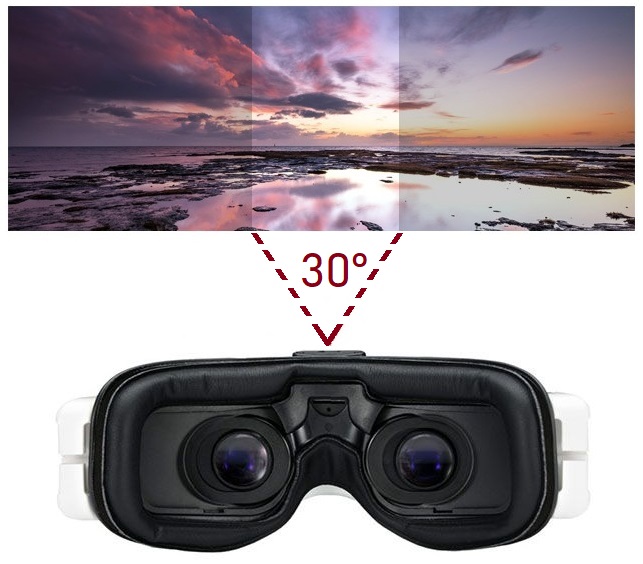
The field of view (FOV) is the most important aspect when choosing best FPV goggles for realizing first-person flight. This parameter reflects what part of the surrounding world we can see at any given time. When using optical equipment, be it FPV goggles or binoculars, each of these devices will have their own field of view. In the case of FPV goggles, the FOV range is typically 25 ° to 45 °. Undoubtedly, there are models with a wider view, however, as practice shows, anything more than 45 degrees later only complicates the visualization process, especially at high flight speeds. Therefore 42 ° - 45 ° is the ideal FOV where you can see the entire channel without having to move your eyes.
The field of view of FPV helmets is much wider than the range of goggles and can range from 82 ° to 140 °. Nevertheless, helmets are practically not used in hobbies for dynamic flights (due to the very reasons described above) and are more suitable for a novice audience of users, or for measured flight with a cinematic accent.
IPD (Interpupillary Distance)

The interpupillary distance, or IPD, is the distance between the centers of the pupils of both your eyes. IPD technology is critical for binoculars and FPV goggles. Each of us is unique and has different face shapes and eye distances. For a better view of FPV flight, it is important that the FPV goggles allow both pupils to be positioned in the center of the eyepiece lenses. This is usually accomplished mechanically by moving each eyepiece to the left or right. For FPV helmets, this option is excluded, since one large display is used to display FPV images.
Materials of optical elements
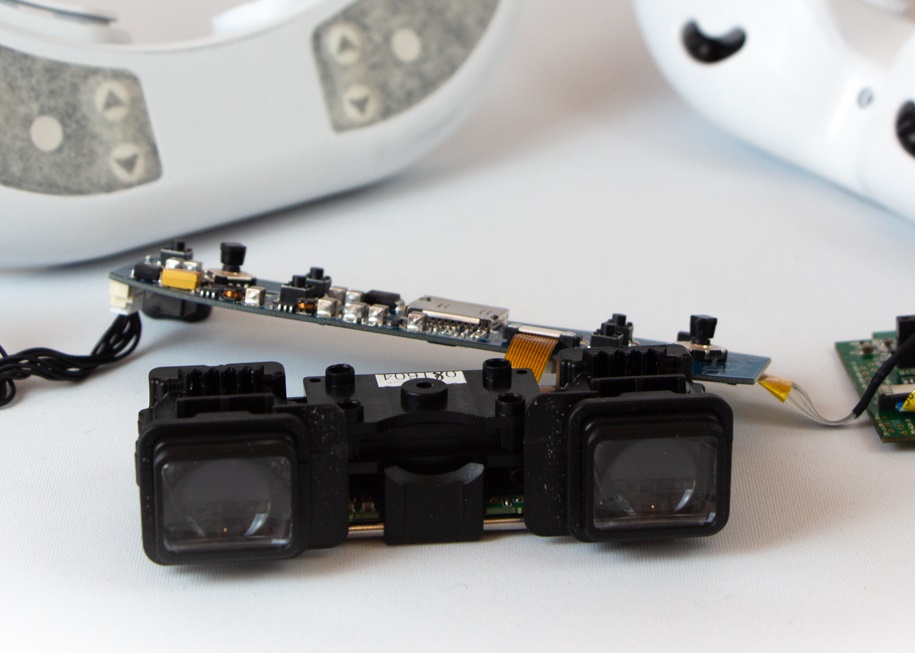
In the case of FPV goggles, optical elements can be made of both plastic and glass. FPV helmets, unlike goggles, are equipped with one large plastic lens, since the weight of the glass lens will further aggravate the already overweight helmet. When choosing FPV goggles, glass optics are undoubtedly the best option for image clarity and quality.
Pixel resolution
![]()
This characteristic is present in the specification of both FPV goggles and FPV helmets. FPV goggles will have two small displays, while FPV helmets have one large display. The more pixels are used in the matrix to display the picture, the higher its quality and, accordingly, the more details you will see with less eye strain. In the process of familiarizing yourself with the various models, you will be able to see many options for the display resolution of FPV goggles / helmets, for example, such as:
- QVGA: 320 × 240 pixels
- VGA: 640 × 480 pixels
- SVGA: 800 × 600 pixels
- XGA: 1280 × 960 pixels
- HD 720: 1280 × 720 pixels
- HD 1080: 1920 × 1080 pixels
- UHD: 3840 × 1080 pixels
SVGA and above are the best choice when it comes to FPV goggles / helmets resolution.
Digital Head Tracking
FPV goggles / FPV helmets with head tracking function. It should be noted right away that such a function is relevant exclusively for GPS drones on board of which a camera is installed at least in a 2-axis gimbal, and the software supports the Digital Head Tracking function. In fact, this technology tracks the movement of your head and sends these signals to the drone, after which the camera system (multi-axis gimbal camera) works out the same movements as your head. If you look up, the camera looks up, left or right, the camera will follow in the same direction. This brings a whole new experience to flying a drone. An incredible experience that gives the user much more flexibility in the cinematic direction of using the drone. Today, many premium FPV goggles and FPV helmets support digital head tracking.
Replaceable receiver modules
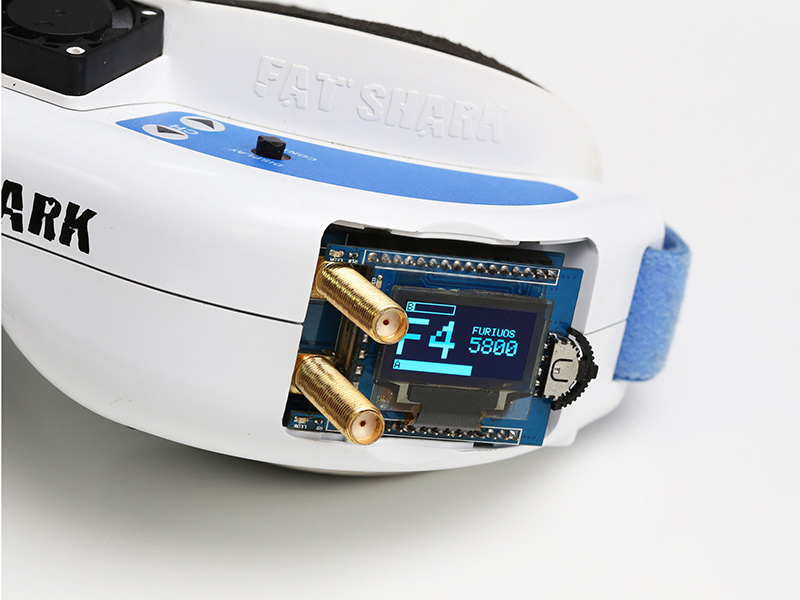
This option is relevant for headsets that are purchased for pairing with an FPV drone. FPV helmets / goggles that come with a GPS drone, or that support interaction with them (universal) do not have the ability to replace the receiver module.
First of all, it is worth explaining that retrofitting with such a module is carried out by the user in order to expand the slave. frequency range and video signal amplification. In most cases, they are optional. component and purchased separately. These modules are available in 1.3 GHz, 2.4 GHz or 5.8 GHz options. It is best to first read the manual or user manual regarding the compatibility between your FPV headset and the selected receiver module.
For example, FPV goggles "Orqa FPV. One Goggles" or "Fat Shark" are only compatible with NexwaveRF modules. These receiver modules are easy to install. Typically, you just need to detach the detachable panel of the FPV headset, and then install the module in the opening.
Soft front pad
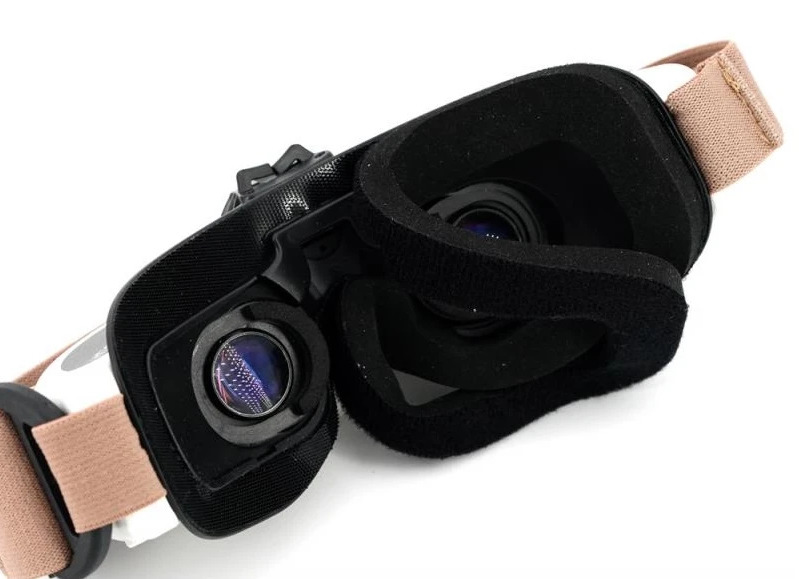
Soft high-quality pad located in the place where the face fits, guarantee of comfortable use of FPV goggles / helmet without glare. When choosing, it is recommended to pay attention to what material and what thickness the pad is used from. The best material is polypropylene foam lined with soft cloth / leather, or silicone seal (foam is considered the worst material). The pad should cover the entire area of contact with the face, including the nose, otherwise light can be expected, and the plastic pressure in the nose will inevitably cause discomfort during piloting.
Note! There are models of FPV goggles, the manufacturability of which allows you to abandon the use of any overlays without loss in wearing comfort, and most importantly, without loss in the quality of displaying the video picture. You will get acquainted with such models in this rating.
Top Brands
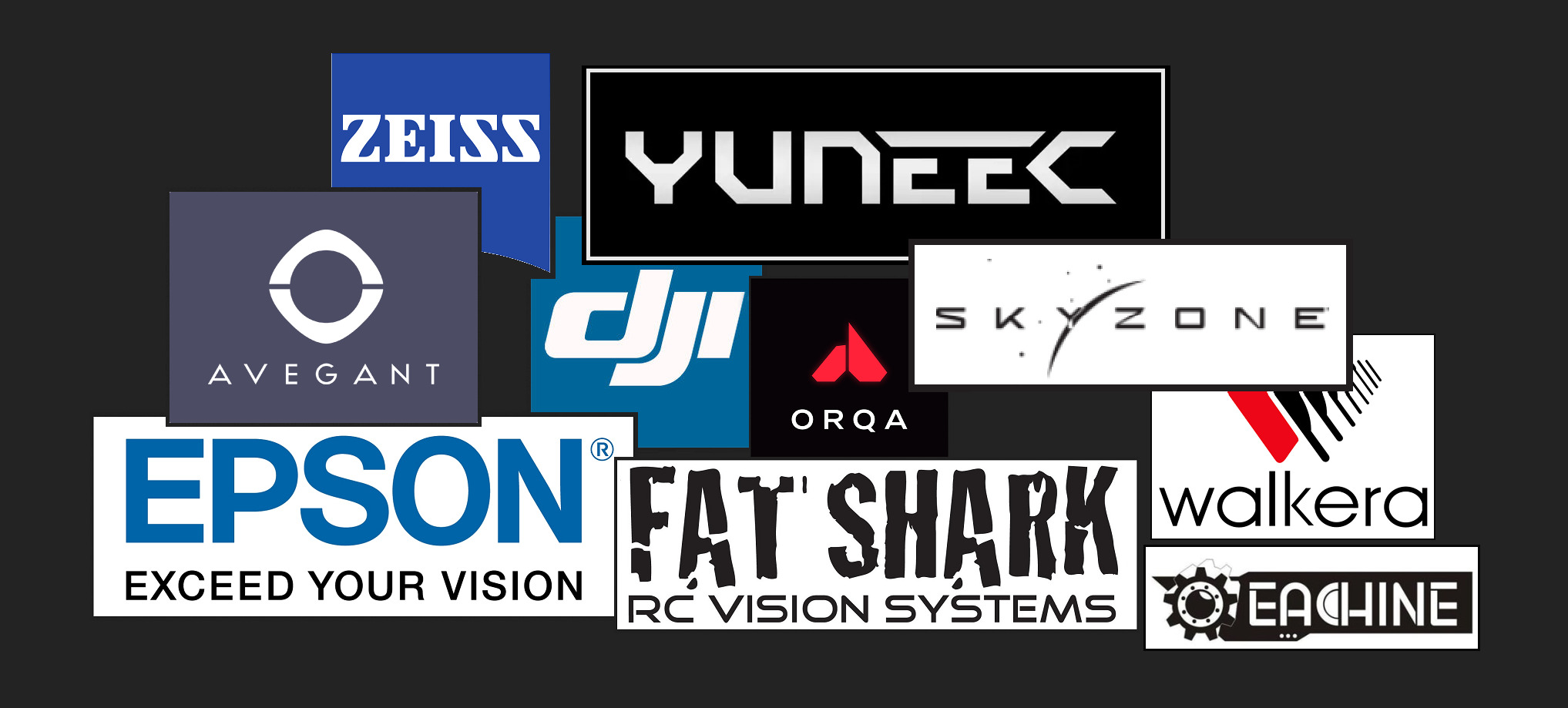
The list of the best FPV goggles / helmets includes:
For GPS drones:
- Epson
- Carl Zeiss
- Avegant Light Field Technology
- DJI Innovations
- Yuneec International
For FPV drones:
- DJI Innovations
- Orqa FPV
- FatShark
- Skyzonehobbies
- Walkera
- Eachine
Key Tips Before You Buy
- Choose FPV Goggles / FPV Helmet with 42 ° - 45 ° FOV, adjustable interpupillary distance (IPD), SVGA resolution or better, glass optics, digital head tracking, and a soft quick-change pad (Soft tissue / leather foam polypropylene or Silicone Seal) covering the entire face area including the nasal area.
- For people who wear corrective glasses, when choosing an FPV helmet, it will not be superfluous to pay attention to the fact that its design supports their joint operation
- Before selecting an FPV headset, it is best to check your drone manufacturer's website to see what they recommend for the model you purchased. It is possible that they were testing different brands for their drones.
- If you are the owner of a Walkera drone, be aware that this developer already has good FPV goggles / helmets in their assortment, specially designed for their drones.
- Try to get the best first person flying goggles / helmets within your budget, as the future experience will be worth it. If you buy the wrong FPV goggles, you won't enjoy it in the least.
As noted above, our rating is divided into two parts "Best FPV goggles / helmets for GPS drones" and "Best FPV goggles / helmets for FPV drones". Let's start with the best GPS drone headsets. In both parts, we have arranged the models according to the principle from the simplest to the most technologically advanced.
The best FPV goggles / helmets for GPS drones

8. Samsung Gear VR Goggle
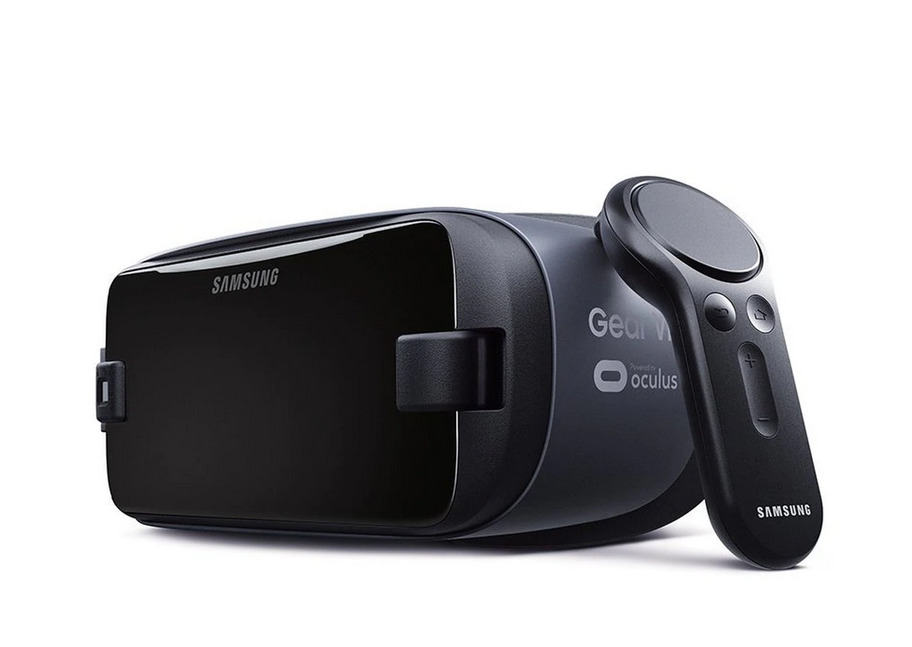
Samsung Gear VR is an exception. It is capable of providing a Super AMOLED display, a wide field of view (FOV), accurate low-latency head tracking and a comfortable fit. Samsung Gear VR works seamlessly with Galaxy smartphones. All you have to do is insert your gadget into the headset. The only drawback when operating in tandem with a drone is the non-adjustable interpupillary distance. Average price in the market: $ 70.
Features
- Weight: 345g
- 19% lighter than previous model
- Ergonomic design
- Large touch panel (easy and precise control)
- FOV: 101º
- Glass optics
- IPD: 62 mm (not adjustable)
- Phone connection: via USB Type-C and Micro USB
- Compatible only with Samsung smartphones: Galaxy Note9 (Gear VR model SM-R325NZVC only), S9, S9, Galaxy Note8, S8, S8, S7, S7 edge, Note5, S6 edge, S6, S6 edge, A8 Star, A8, A8
- Relevant for working with DJI drones via paid mob. application "Litchi for DJI Mavic / Phantom / Inspire / Spark", or to work with Parrot drones via free mob. FreeFlight 6 app
There are many examples on YouTube of how to connect Samsung GEAR VR to DJI drones, such as this one:
7. Homido V2 VR Headset
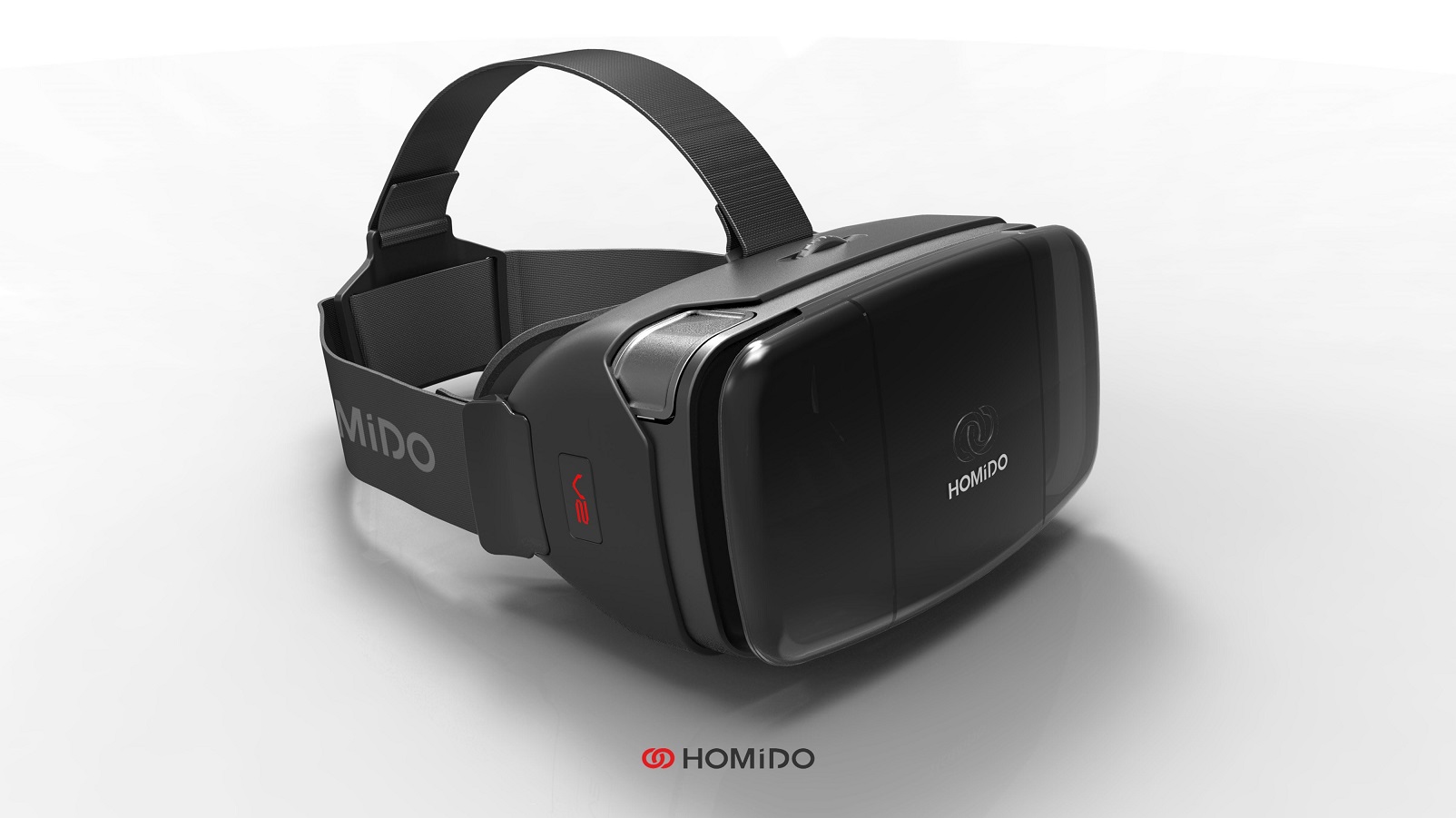
The Homido V2 headset is an excellent quality alternative replacement for the Samsung Gear VR. Country of origin: France. Unlike its predecessor, it is not tied to one manufacturer of compatible smartphones and works with both iOS and Android devices. Provides an exponential comfortable fit, has adjustable interpupillary distance and focus adjustment, and boasts a wider viewing angle and lighter weight than GEAR VR. The only thing that the headset does not support is the head tracking function. Average price in the market: $ 70.
Features
- Ergonomic design
- Well-made comfort pad
- Quality glass optics FOV: 105º
- Adjustable Focus
- Adjusting the inter-bead distance (55 to 70 mm)
- Action button (to start the smartphone without removing it from the headset)
- Natural ventilation system for the inner area of the headset
- Compatibility: iOS / Android with a diagonal of 4.2 - 6 ″
- Relevant for working with DJI drones through a paid mob. application "Litchi for DJI Mavic / Phantom / Inspire / Spark", or to work with Parrot drones via mob. Parrot FreeFlight 6 app
An example of headset operation in tandem with a Parrot Anafi drone. The author of the video notes that unlike the branded Cockpitglasses V2 headset, Homido V2 is more comfortable:
6. Yuneec SkyView FPV Headset
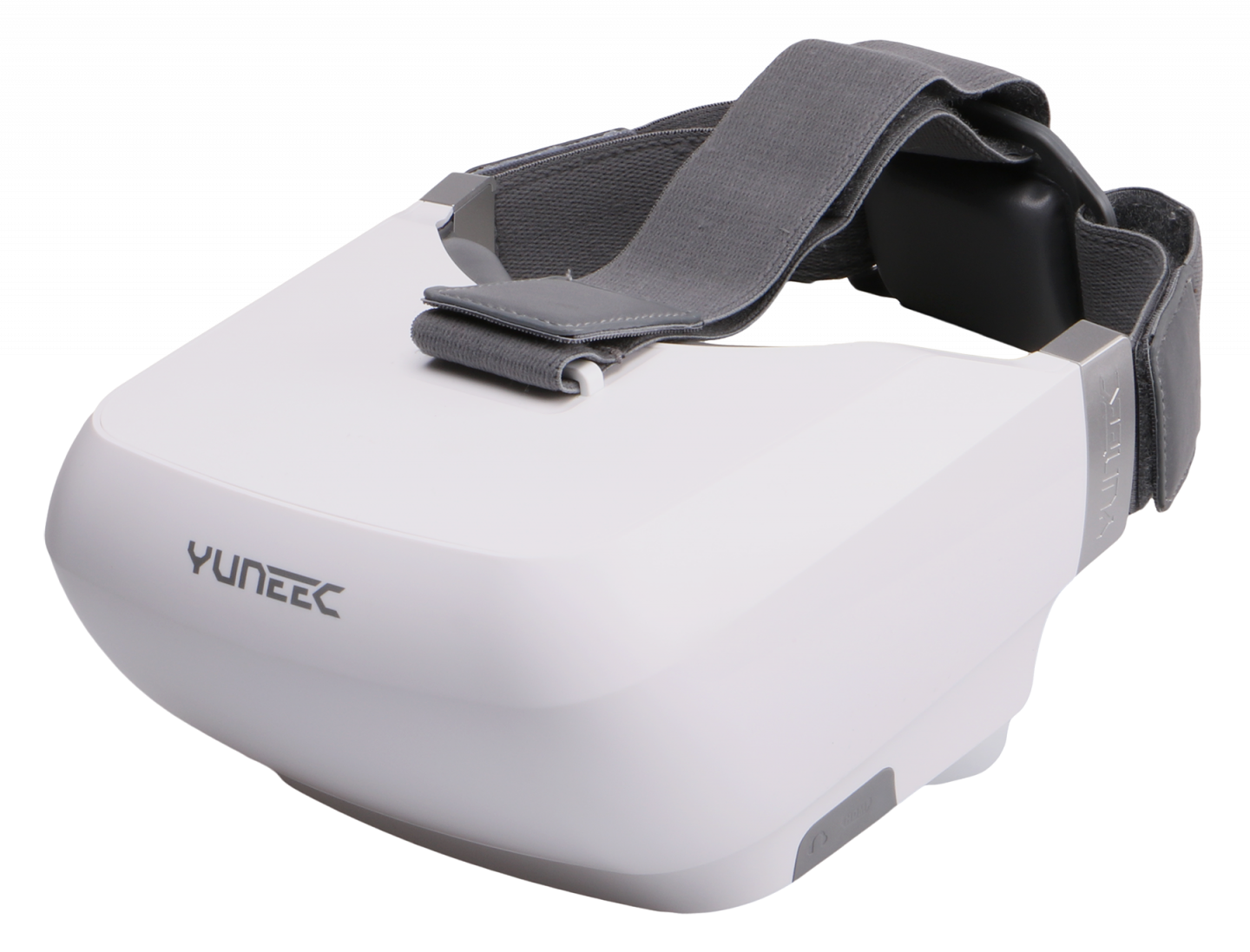
FPV helmet Yuneec SkyView FPV Compatible with the Typhoon H, Typhoon Q500 4k and Tornado H920 drones. By controlling the camera, you will see exactly what the drone sees, as if you were on board. Yuneec FPV goggles have a solid construction and ergonomic design, adjustable headband, and also allow you to use FPV helmet with vision correcting goggles. The SkyView headset is equipped with a USB port for fast charging and an HDMI port for connecting any HDMI devices, so in addition to flying in the first person mode, you can use these glasses for watching movies, video games and more. The HDMI cable can also be used to transfer audio to the helmet. Average price in the market: $ 240.
Features
- 5-inch screen
- FPV resolution: 720p HD
- FOV: 75.5º
- Max. display resolution: 720 × 1280
- Aspect ratio: 16: 9
- Adapted for use with corrective glasses
- Compatible with other devices with HDMI output
For your information! On the vastness of the YouTube video hosting, life hacks are already walking around allowing you to connect the Yuneec SkyView FPV FPV helmet to DJI dronesMavic Air 2 to the screen of the FPV helmet from Yuneec.
5. DJI Goggles
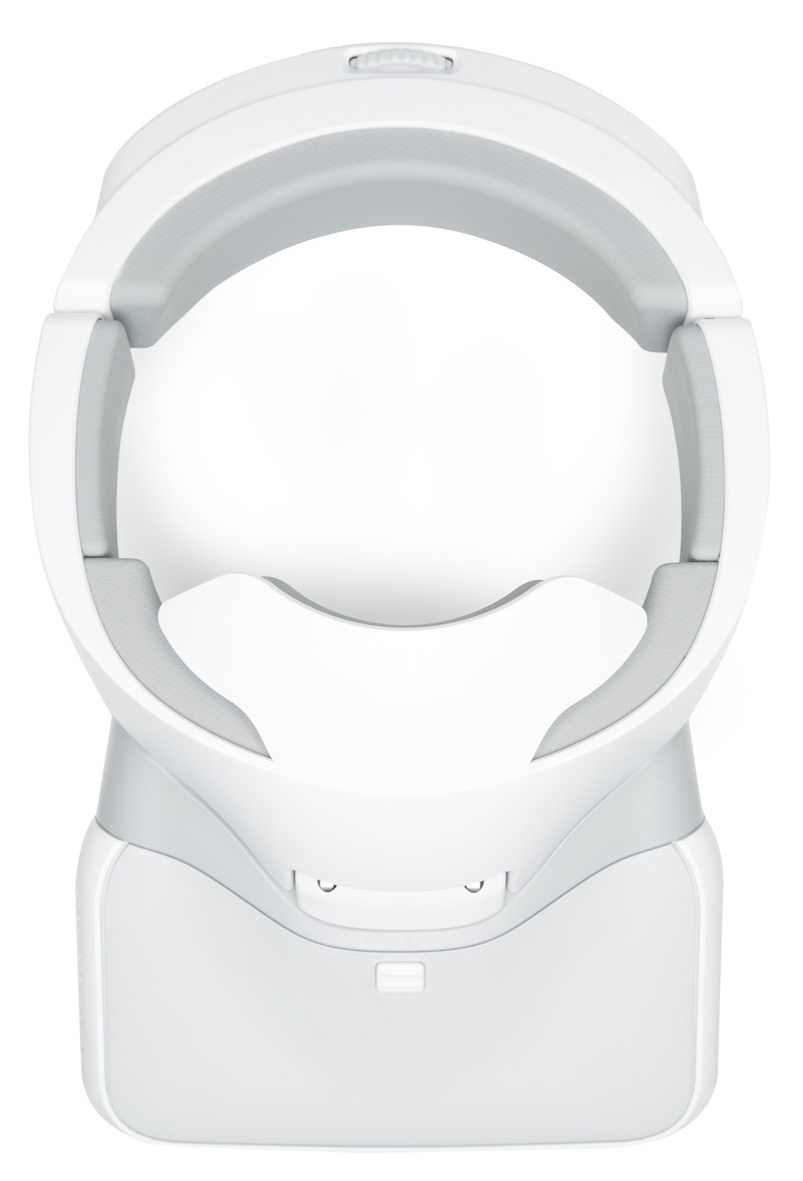
DJI Goggles are high-tech goggles designed specifically for DJI drones, designed for first-person flight when paired with such models like Mavic 2, Mavic Pro, Mavic Air, Spark, Phantom 3, Phantom 4 ( Pro / Advanced ), Inspire 1 and the best of the best Inspire 2. DJI goggles can also be connected to other compatible third-party devices. Average price in the market: $ 400. For more information on DJI Goggles, see our review.
Features
- Immerse yourself in flight
- A pair of ultra-high quality large screens
- Total resolution: 3840 × 1080 (resolution of each screen: 1920 × 1080)
- Field of view of one screen 85 °
- Operation. range of work. frequency: 2.4GHz
- Video stream resolution: 1080p @ 30 fps, 720p @ 60 fps, 720p @ 30 fps
- Wireless connection with low latency up to 110 ms (relevant for drones with OcuSync video transmission system; for LightBridge systems, the latency ranges from 140-190 ms)
- Direct photo / video control
- Digital head tracking function
- 6 × shooting control modes
- Very comfortable and ergonomic design (no need to constantly take off your glasses, just lift the mask up)
- Built-in sensors: Gyroscope / Accelerometer and proximity sensor
- Adapted for use in corrective glasses vision
- Adjustable IPD: 58-70 mm
- Silicone pad
- Peripheral ports: Micro USB / Micro SD Card / HDMI / Audio Jack
- Operating time up to 6 hours
4. DJI Goggles Racing Edition
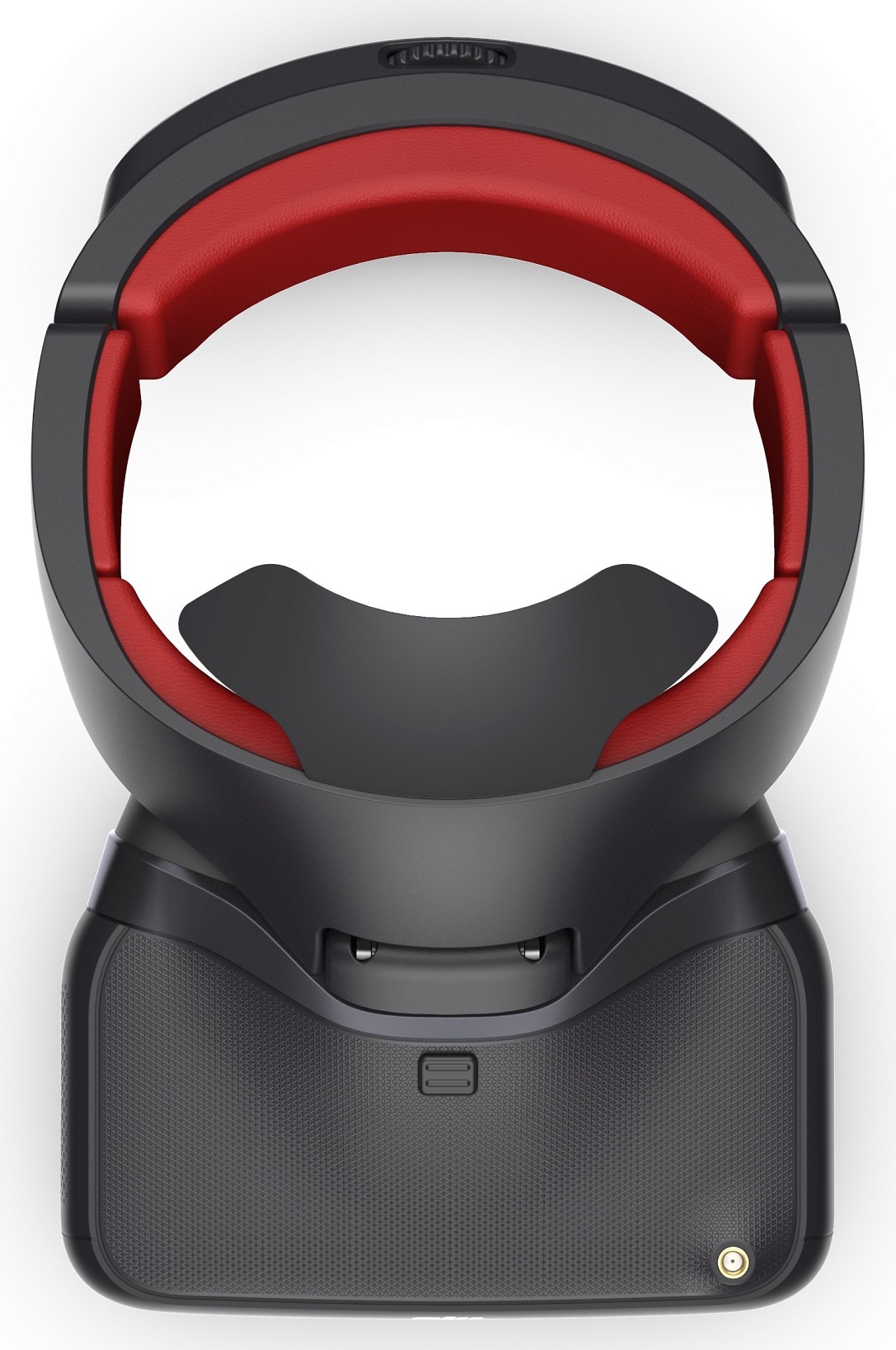
DJI Goggles Racing Edition (RE) is a racing version that has received, in addition to the key features of the standard version of the glasses, a new black metallic color, replaceable upholstery made of high quality red leather, a redesigned faceplate and head ring for more convenient operation, as well as a number of significant improvements (see features). Average price in the market: $ 540. For more information on the DJI Goggles RE, see our review.
Features
- In addition to the 2.4 GHz digital transmission band, DJI Goggles RE also support the 5.8 GHz band, avoiding common interference in the more congested 2.4 GHz band
- Redesigned internal linear polarized omnidirectional antennas and added a new external Pagoda antenna, 5.8GHz Left Circular Polarized Single Frequency Omnidirectional (LHCP) antenna
- Restructured radio strategy and video decoding algorithm to reduce transmission latency to 50ms (less than 10ms wireless latency; result achieved when tested with 480p video stream), ensuring smooth and reliable video transmission and avoiding video lag and disconnection from the digital video transmission system during normal operation
- DJI Goggles RE support analog transmission at any integer frequency from 5.650 to 5.925 GHz and storage of analog video on Micro SD card (18 3) DJI Goggles RE can store digital video on Micro SD card
- DJI Goggles RE supports local video playback and Sphere panorama view, allowing users to turn their head to get a 360 ° view of Sphere panorama
3. Avegant Glyph
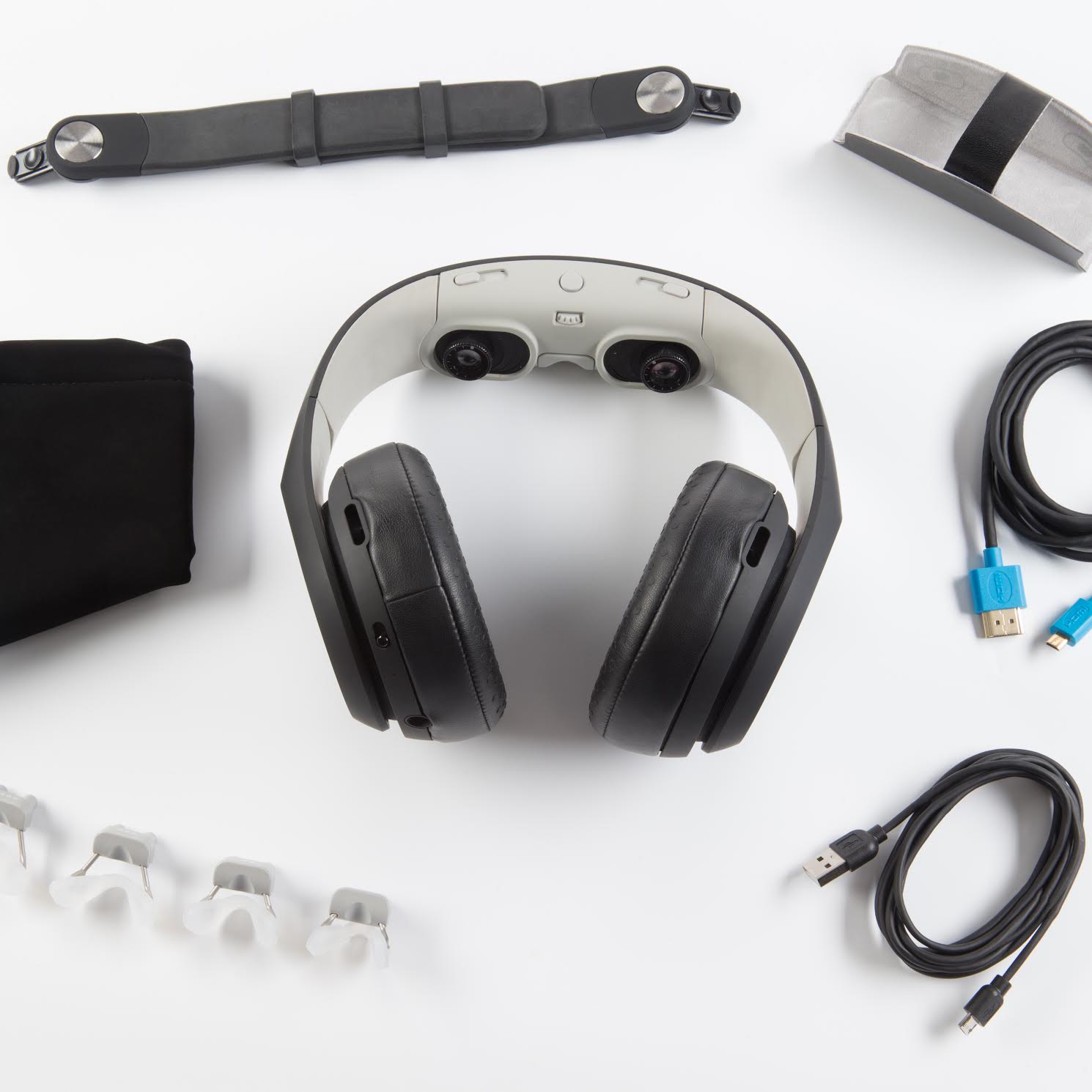
Avegant Glyph is a unique screenless video headset that uses the patented Retinal Imaging Technology, built on advanced optics and an array of 2 million micro mirrors to project the image directly onto your eyes. Video glasses provide a resolution of 1280 × 720 (per eye), but unlike LCD displays, the image display quality is above all praise. In this case, it is appropriate to say: "It is better to see once."
The Avegant Glyph is connected via HDMI input, which allows you to connect them directly to any computer, game console, TV / set-top box, various drones, and using the included adapters - to smartphones and tablets. Average price in the market: $ 309. More details about Avegant Glyph can be found in our review.
Features
- Weight 411 grams
- Patented screenless image technology "Retinal Imaging Technology"
- Screen resolution for each eye 1280 × 720
- 16: 9 widescreen
- Digital head tracking function
- Built-in stereo headset
- Diopter adjustment for each eye -7 to 1
- Adjustable IPD range
- Viewing angle 40 °
- 4 × interchangeable nose pads included (taking into account various physiological characteristics)
- Compatible with various GPS drones (and with retrofitting and with FPV drones with analog and digital FPV system)
Supported drones:
- DJI ( Mavic Air 2 Smart Controller, Mavic 2 Smart Controller, Phantom 3, 4, 4 Pro, 4Pro, Inspire 1 and 2, Matrice 100, 600
- Parrot (Disco / Bebop )
- Yuneec ( Typhoon H, TORNADO H920 PLUS, H520 )
- 3DR Solo
The video below shows how to connect the Avegant Glyph to GPS and FPV Drones:
2. ZEISS CinemizerOLED FPV Glasses

At the heart of the CinemizerOLED video glasses are modeled on two high-resolution OLED displays with a record pixel density of 40-inch a screen working in tandem with super clear lenses. CinemizerOLEDs are capable of providing the user with an amazing immersive experience, making them the ideal drone control solution.
Well, when you are not piloting, video glasses will give you an absolutely fantastic high-definition cinema with incredible color reproduction, for example, when connected to a phone, game console or TV-box. The CinemizerOLED is powered by 6 hours of battery life, making it ideal for everything from drone racing to watching movies, TV shows and console gaming. Average price in the market: $ 760.
Features
- Weight of glasses (with / without controller) 120/70 g
- 2 × OLED displays with a structure of 4 subpixels per pixel, resolution: 870 × 500 each (100% duty cycle)
- 2500 ppi pixel density (nearly seven times that of Apple's Retina displays)
- Simulated 40-inch screen at 2 meters
- 16: 9 widescreen
- 24-bit RGB color depth
- Viewing angle 30 °
- Diopter adjustment for each eye -5 to 2
- IPD range 59 to 69 mm
- 2 × interchangeable silicone nose pads included (for various physiological conditions)
- Adjustable ear clips
- Detachable sun shade
- Built-in stereo headset
- Compatible with various GPS / FPV drones
Supported drones:
- DJI ( Mavic Pro, Mavic Air, Mavic 2, Phantom 3, 4, 4 Pro, 4Pro, Inspire 1 and 2, Matrice 100, 600
- Parrot (Disco / Bebop
- Yuneec ( Typhoon H, TORNADO H920 PLUS, H520 )
- 3DR Solo
- Xiaomi Mi
- FPV drones with analog and digital FPV system
You can read the full article covered by the developer on connecting CinemizerOLED video glasses to various GPS / FPV drones here There are also links to articles on how to connect the goggles to the above drones and other devices.
In the video below, a user demonstrates how to connect the ZEISS CinemizerOLED video glasses to a DJI Mavic Pro drone.
1. Epson Moverio BT-300 FPV Goggles

One of the best FPV solutions from a third-party developer, which officially supports pairing with DJI drones. Both developers have even released a promo video showing the Moverio BT-300 FPV goggles used by firefighters in tandem with the Mavic 2 Enterprise and Matrice 200 drones to save lives. Epson Moverio BT-300 reimagines first-person viewing technology with a transparent display, allowing you to simultaneously view the incoming video stream from your drone and key flight statistics, as well as take pictures online, while keeping the UAV in the field of view. And best of all, they're incredibly lightweight and comfortable. Average price in the market: $ 780.
Features
- Lightweight and compact (glasses weigh only 69 grams) - easy to wear even for a long period of time
- Official certified add. DJI drone accessory
- Premier FPV DJI partner: BT-300 FPV controller comes preinstalled with DJI GO / DJI GO 4 apps
- Latest Silicon OLED - Si-OLED (built on light-emitting LEDs that do not require constant backlighting)
- Full transparency, bright and saturated colors, high image quality with HD Ready 1280 × 720p resolution
- Full flight control - transparent display allows pilots to see the video stream from the drone camera, while keeping the UAV in the field of view
- Color depth: TrueColor (24 bit)
- Good visibility even in sunny weather - thanks to special gray and black dimmers, which is completely eliminates the need for a sun visor
- Easily capture your drone in flight from the pilot's field of view - the front camera captures real-time 1080p at 30 fps.
- Autonomy on one charge up to 6 hours
- Built-in sensors and communication devices: compass, gyroscope, accelerometer, microphone, light sensor, Wi-Fi, Bluetooth, USB, Miracast
- Ready for the future - motion sensors, a high-resolution front camera and the ability to visualize 3D content will allow developers to develop the next generation of flight experience
- Special mounting clips allow you to securely mount the BT-300 FPV controller on the remote control of the drone
- Fits prescription glasses - fits a wide range of prescription glasses
- Built-in card slot - Supports removable microSDHC cards up to 32GB.
- Supported drones: DJI: Spark / Mavic Air / Mavic Pro / Mavic 2 / series Phantom 4Matrice 200 series ; Other drones: It is possible to connect to UAVs from other manufacturers if the drone system allows the drone to be controlled via Wi-Fi via a mobile. Android app
Best FPV goggles / helmets for FPV drones
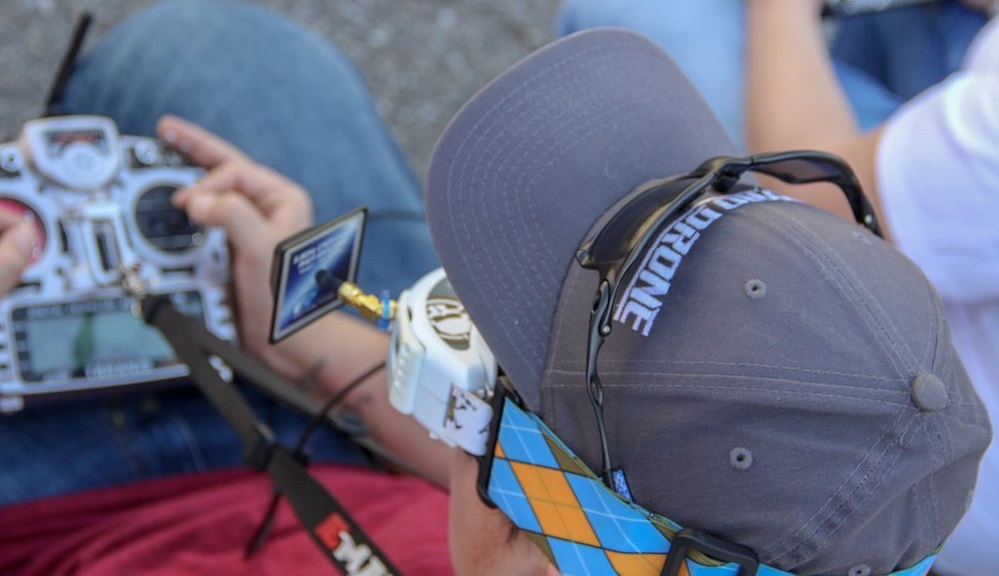
10. Eachine EV800D
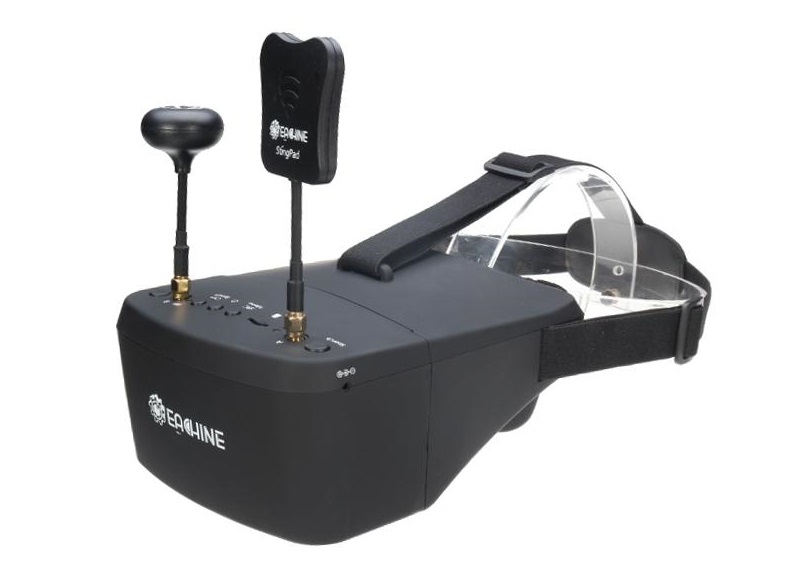
One of the best first-person flight solutions under $ 100. The business card of the EV800D is a 40-channel 5.8GHz Diversity receiver working in tandem with two antennas: a clover 6 Leaf RCHP with a gain of 5 dBi and a panel 16 dBi, which provides the ability to automatically switch between them based on the quality of the received video signal. The exponential quality of work, repeatedly confirmed by users in practice and the affordable price, allowed the model to become very popular in the hobby among entry-level pilots. Average price in the market: $ 90.
Features
- 5-inch high-brightness HD LCD display specially tuned for dynamic flight
- 800 × 480 resolution
- Ultra-wide viewing angle up to 82º
- 40-channel 5.8GHz Diversity receiver with autosearch
- Built-in video recorder (super HD DVR) with resolution up to 720 × 576 pixels.
- Two systems (two dual-core split chipsets for display / recording) that ensure no display lag and no frame loss while recording
- Enhanced auto search function and display of operating frequency on screen
- Clear lens 92%, no distortion, no blur at the edges of the screen
9. Walkera FPV Drone Goggle 4
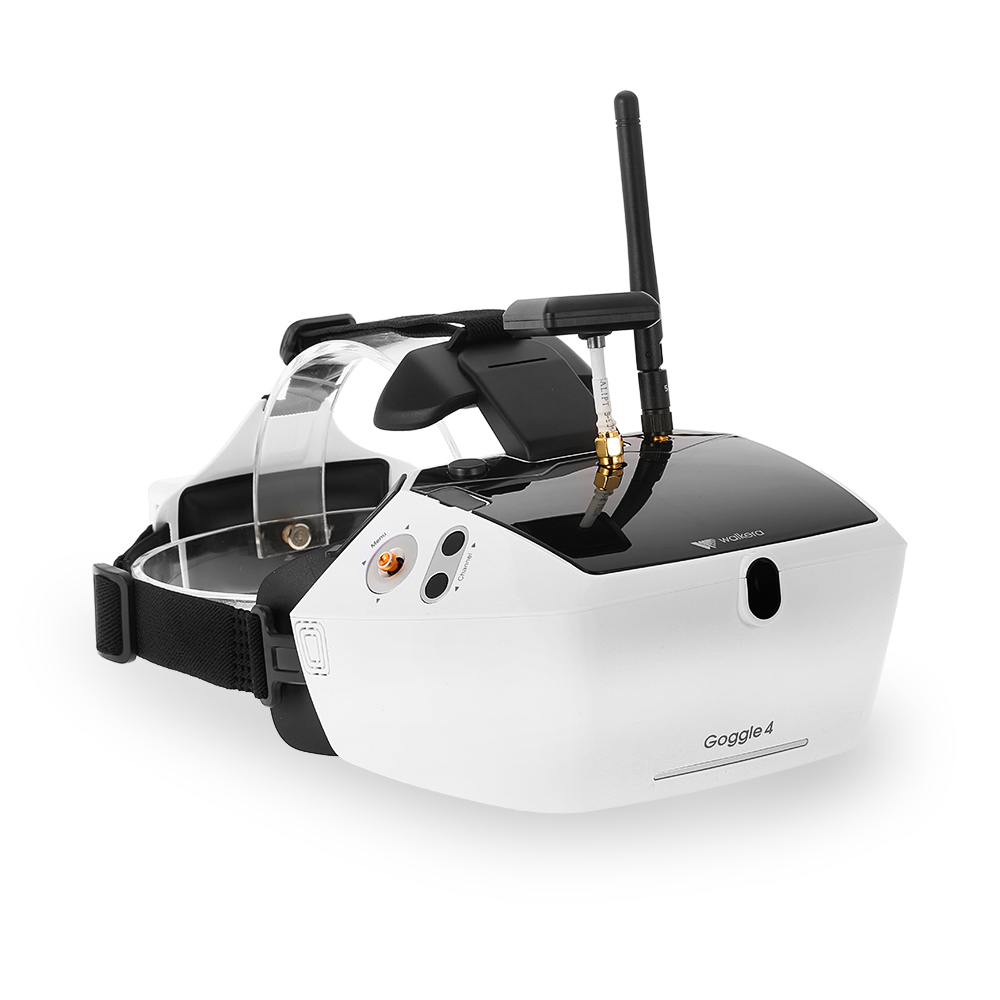
FPV Walkera Goggle Helmet 4 is in high demand among entry-level FPV drone pilots. Along with high quality optics, the headset has a wide viewing angle for better visualization, a dual antenna for a stable connection, and they are lightweight and comfortable, as noted by many users. Although designed for proprietary FPV drone models such as Rodeo 150, F210 Series, Runner 250, Furious 320, they will work seamlessly with any other racing quads you bought or built yourself. Average price in the market: $ 155.
Features
- Ergonomic design for easy use
- AV in / out for external DVR
- Adjust brightness, contrast and sharpness
- Automatic video format detection (PAL / NTSC)
- Automatic and manual channel search
- 5-inch LCD (3 × 800 × 480 pixels)
- Built-in 40-channel FPV receiver 5.8GHz
- Dual antenna technology for stable video streaming
- Li-Po battery 7.4V 1200 mAh
- Operating time approx. 2 hours
- Available in two Basic / Premium versions (the top version has a built-in DVR and HDMI port, which allows the headset to be used with other devices or drones such as DJI Phantom 3 and 4 series
8. Skyzone Cobra X
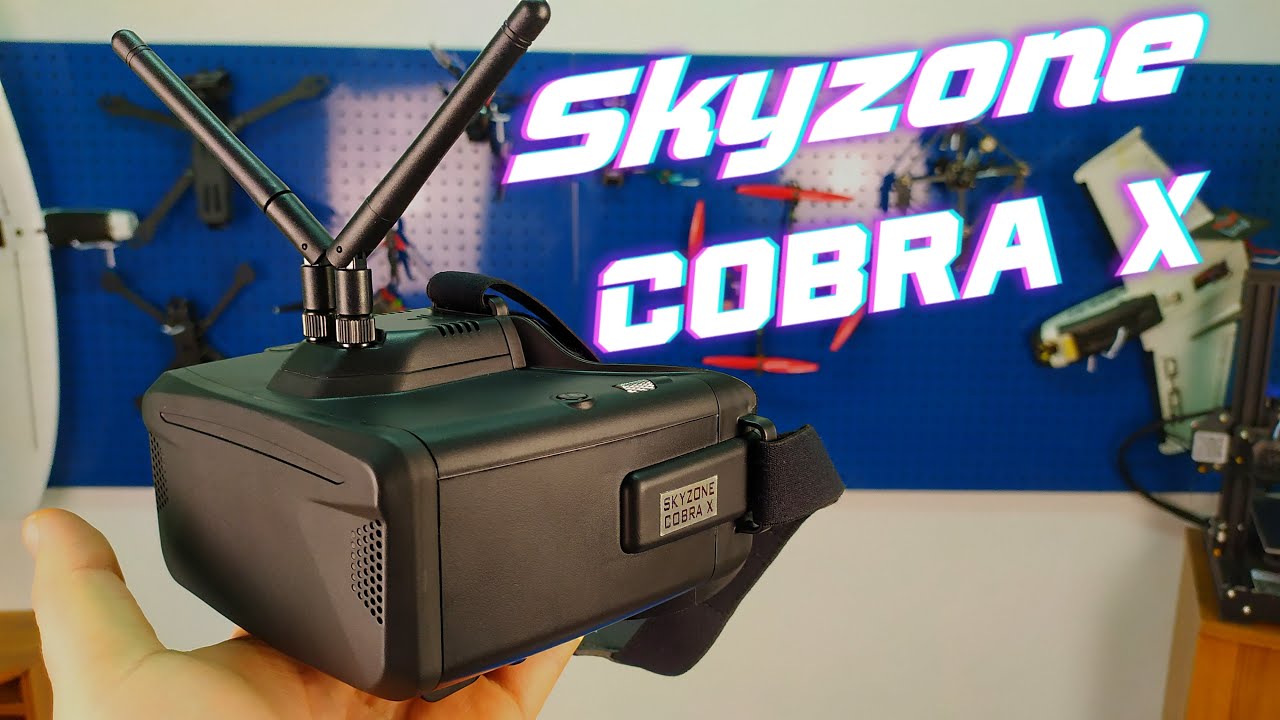
Skyzone Cobra X is the best FPV helmet today in the $ 170-260 price range. The only helmet in the hobby with a RapidFire receiver module that provides sync recovery and frame fusion, giving the pilot a consistent maximum range - almost as good as the RapidFire and TBS Fusion themselves. Therefore, if you are looking for the highest performance FPV helmet, the Cobra X is the one for you. Average price in the market is $ 245.
Features
- Color LCD
- Display resolution: 1280 × 720
- Viewing angle 50 °
- Aspect ratio: 4: 3/16: 9
- 48ch 5.8GHz RapidMix receiver
- Power supply: 1S 18650 / DC 6.5-25.2V / USB-C 5V
- Built-in DVR (H.264, 30fps, MOV 6Mbps, SD up to 128GB)
- Head Tracker (3-axis accelerometer, 3-axis gyroscope)
- Interface: 10 languages
- HDMI input
- XT60 adapter included
- Removable (Velcro) face plate
- Weight: 332 g
7. Eachine EV200D
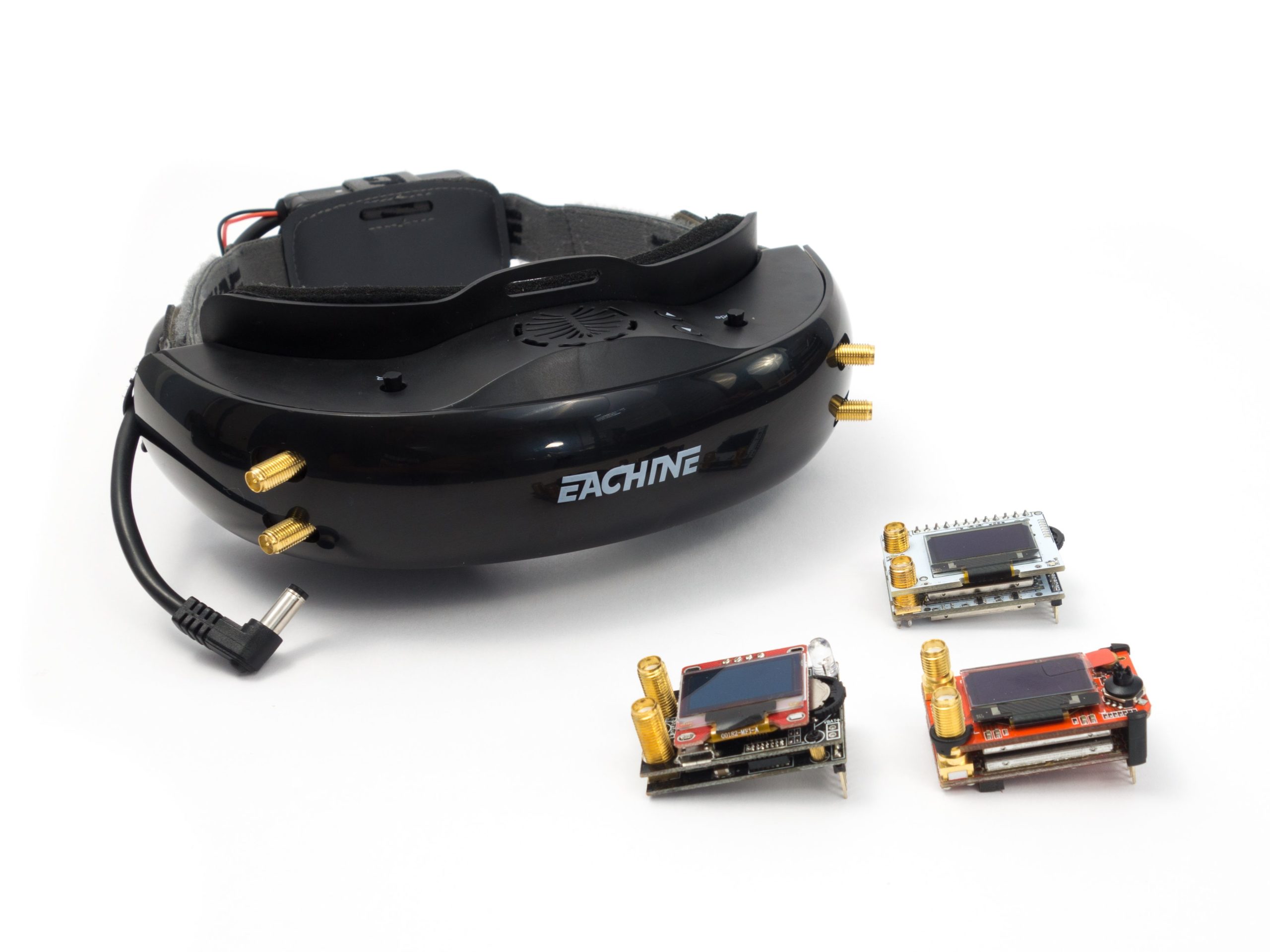
EV200D are a continuation of the budget predecessor EV100. They offer a much larger 42-degree field of view on LCoS displays with a 16: 9 aspect ratio and 720p resolution. These are not the first glasses that use LCoS technology, which, by and large, has not received recognition in the hobby, but in the case of the EV200D, we can confidently say that the developers have done an excellent job of implementing it. The colors are vivid, the resolution is excellent, especially in tandem with higher-end CMOS cameras. Without exaggeration, these are the first high-quality glasses from Eachine. Average price in the market: $ 275.
Features
- H.264 DVR
- HDMI input
- Resolution: 1280 × 720
- FOV: 42 °
- Battery included
- Can be powered by USB
- Two-module “quadversity” compartment
- Additional cover with windows for OLED RX modules
- Format 16: 9 images (switchable to 4: 3 at 35 ° viewing angle)
- IPD: 56-72 mm with diopter support FatShark
6. FatShark Dominator HD3 Core (FSV1076)
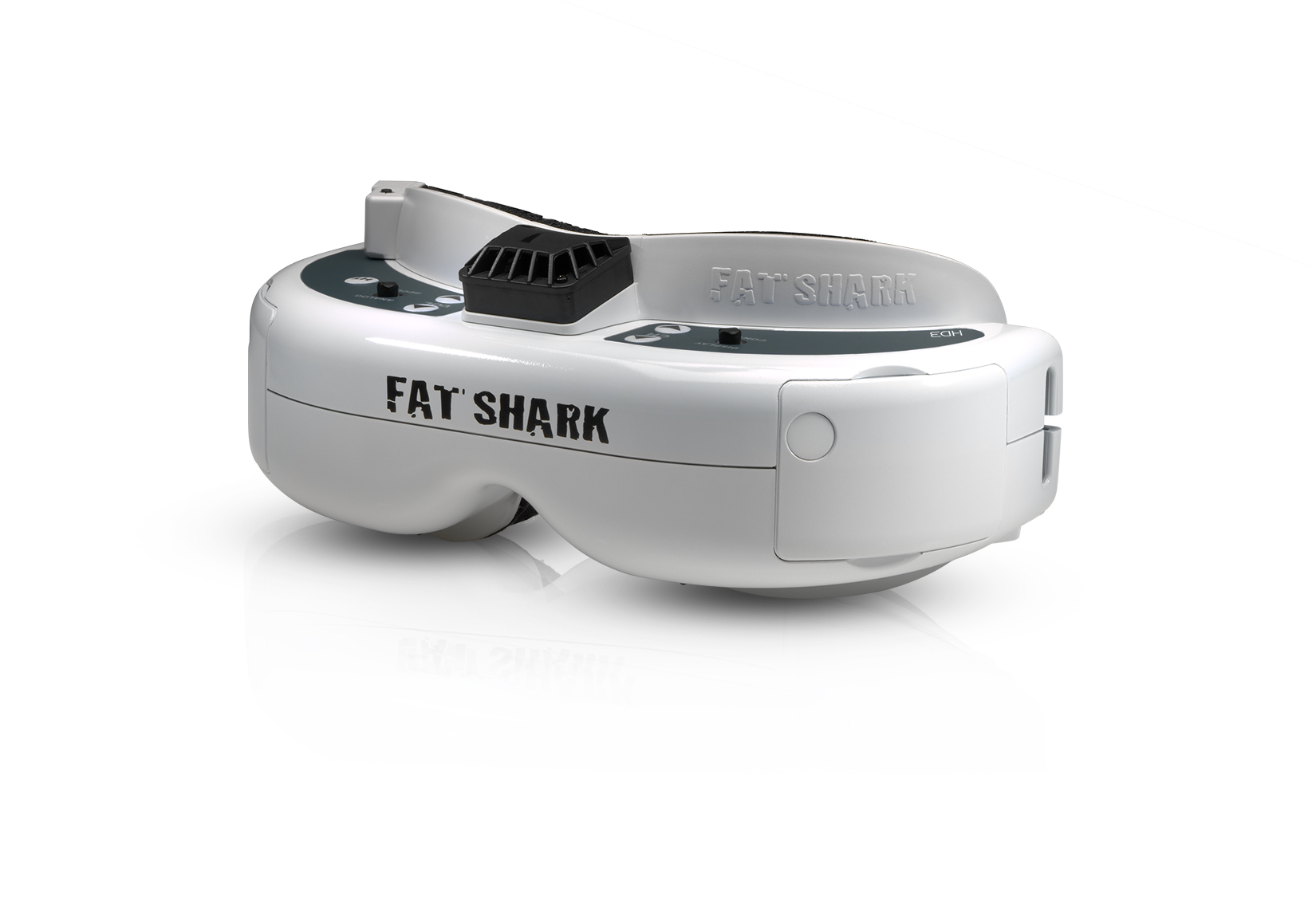
The choice of most professional FPV pilots around the world. The headset includes options such as DVR, low profile bezel and HDMI connectivity, and can handle a wide range of analog and digital inputs to create the best picture on the market with minimal latency. Average price in the market: $ 379.
Features
- Angle of view: 42 °
- Plastic optics
- Resolution: SVGA 800 × 600
- Adjustable IPD: from 59 to 69 mm
- Polarized LED backlight
5. Skyzone SKY03O
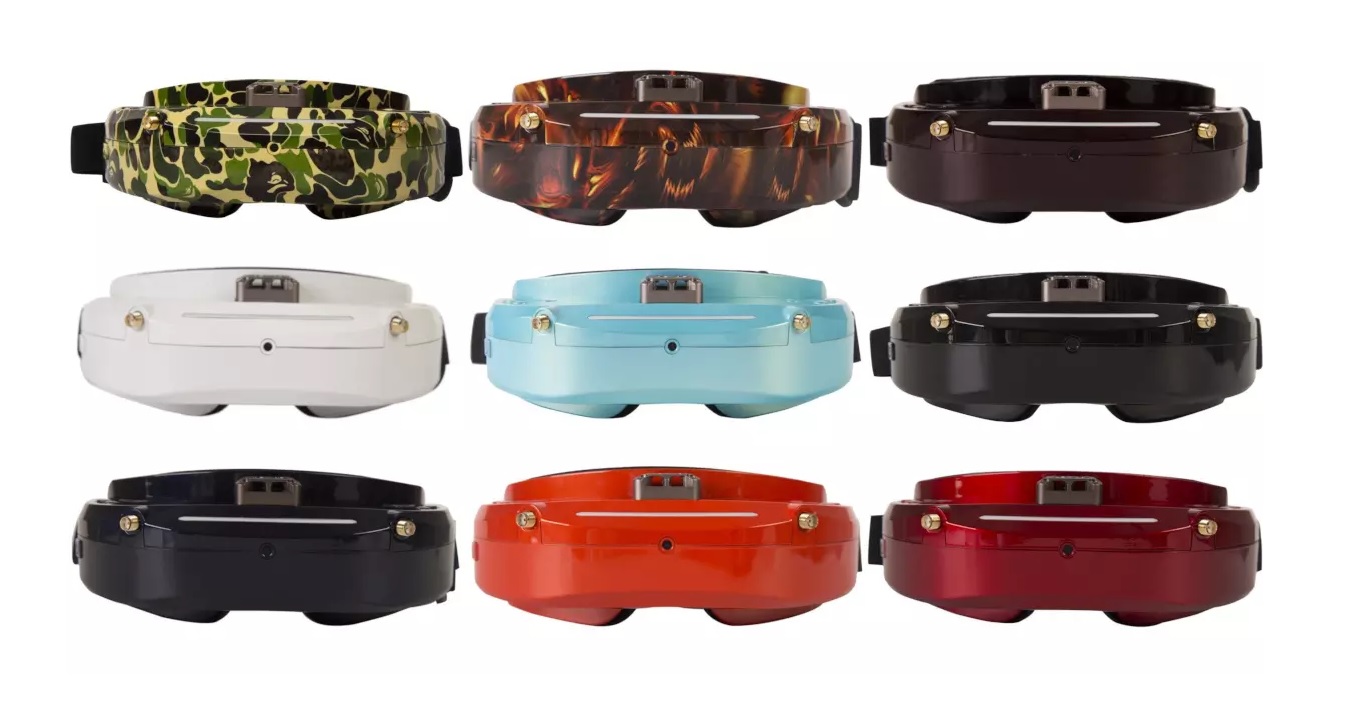
Skyzone is one of the few companies whose products able to compete with the best of the best in the global market. Recently, they have achieved great success, releasing many innovative solutions, where one of such solutions is the Skyzone 03O FPV goggles (Zero Three O). The 03O version has received high acclaim in the hobby, some even dubbed it the "Fatshark HDO Killer", and that's not just for OLED displays. At the time of release, Skyzone 03O was ahead of Fatshark in many ways, especially when it came to user interface (OSD menus). The developers of Skyzonehobbies subtly listened to the comments of users about the models of their predecessors and, at the exit, presented them with full control over their glasses using the example of version 03O. Average price in the market: $ 400.
Features
- Weight: 261g
- Resolution: 1024 × 768
- Viewing Angle: 35 °
- Aspect Ratio: 4: 3
- IPD: 57.5 mm to 69.5 mm
- Built-in 48-channel 5.8 GHz Diversity receiver module including Race Band; with On-Screen RSSI Indicator
- Support for connecting an external module through the optional optional "Skyzone Module Adapter"
- Built-in front camera (for communication with the outside world without removing the headset)
- Available modes: RF Normal, RF Racing, HDMI IN, AV IN and DVR Playback
- Head Tracking Support: Pan: 180 ° / 120 ° / 90 °; Tilt: 120 ° / 90 ° / 60 °
- Built-in fan (to cool the headset system and eliminate fogging of the optics, variable speed)
- Active front LED backlight
- 9 × colors
- Input voltage: LiPo battery 2S to 6S (or 7-26 VDC)
4. FatShark HDO2 (FSV1123-1)
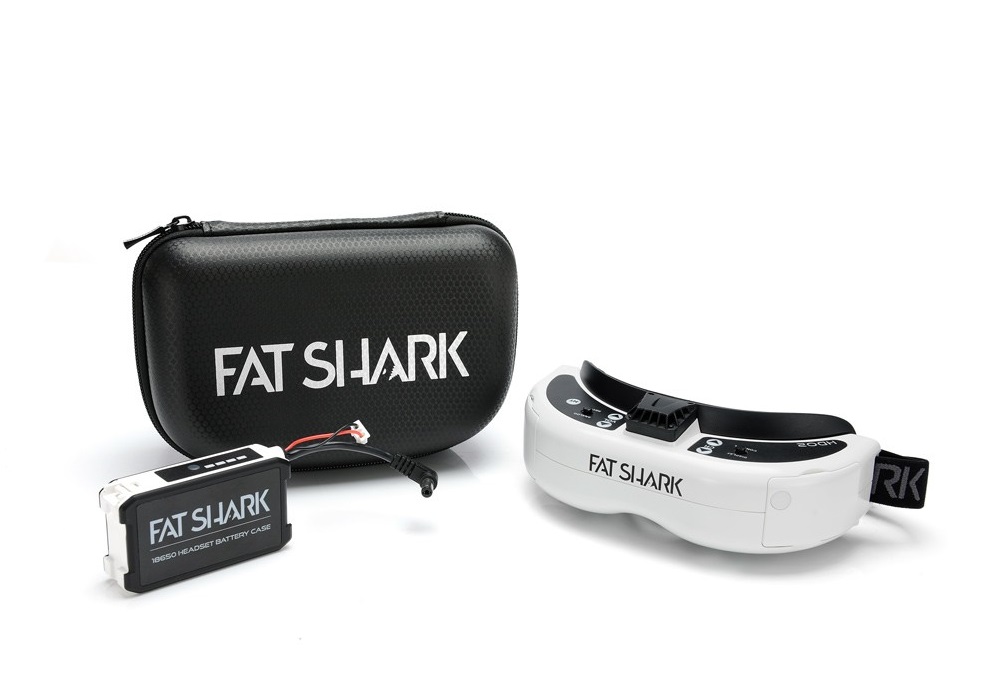
The Dominator HDO2 headset is FatShark's prompt response to the announcement of the revolutionary Orqa FPV. One Goggles headset in every sense of the word, as otherwise the company had every chance of losing its status as the best in the unmanned hobby. The HDO2 uses Sony's similar large 1280 × 960 OLED panels, providing a significantly improved 46-degree field of view. Display customization is now possible using a new OSD menu with advanced controls. HDO2 can be further personalized with adjustable focus, adjustable IPD, adjustable bezel curvature, adjustable aspect ratio and a customizable power button, also hastily added solely with the introduction of the Orqa headset. Average price in the market: $ 500.
Features
- Angle of view: 46 °
- Adjustable IPD: 54 to 74 mm
- Diopter adjustment for each eye: 2 to -6 diopters
- 2 × 0.5 ”Sony OLEDs
- Resolution 1280 × 960
- Auto NTCS / PAL selection
- Configurable Power Button
- AV mode 4: 3/16: 9
- HDMI mode 16: 9
- Analog DVR: 640 × 480 @ 30fps; with MicroSD support up to 32GB
- DVR recording speed: 6 Mbps (MJPG, AVI compression)
- Upgradeable via SD card
3. Orqa FPV. One Goggles
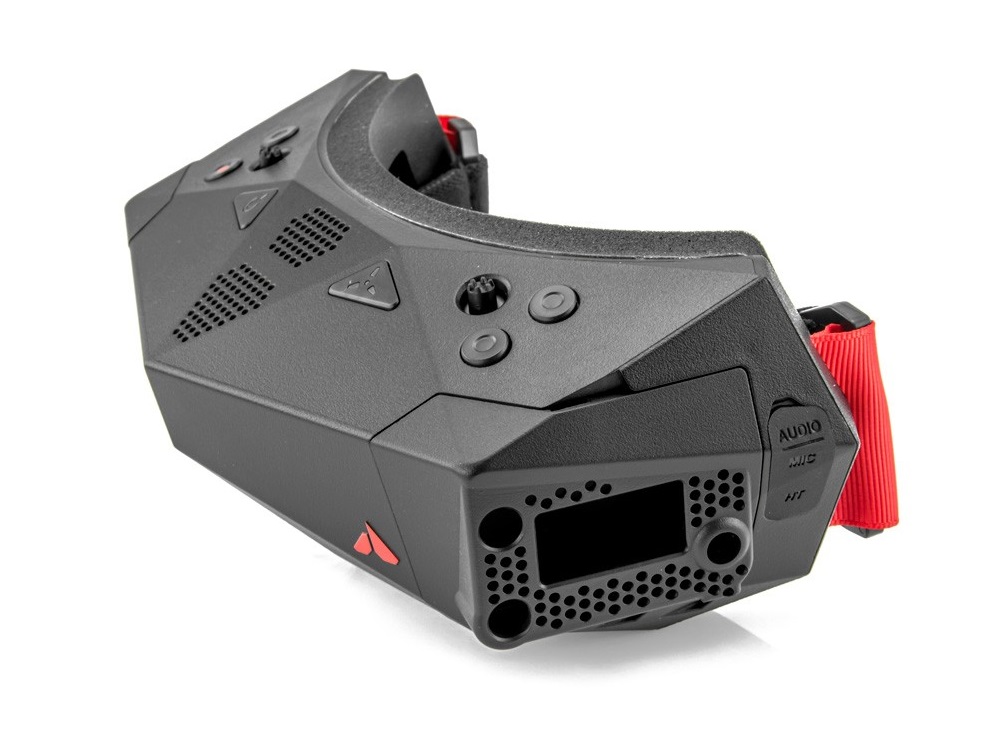
Orqa FPV Goggles. The kickstarter fundraising campaign launched in 2019 ended in just two days, surpassing its target by 800%. The headset boasts superbly designed, high-quality optics delivering crisp, sharp edge-to-edge (no blur) images that set a new standard for immersive FPV mode, a large 1280 × 960 resolution screen made up of two high-quality 0.5-inch micro-OLED displays from Sony with all-glass optics for incredible image and color clarity, a wide IPD range (56-74mm) for a good fit on any face, and a large 44-degree FOV for the best FPV experience. Country developer: Croatia. Average price in the market: $ 650.
Features
- Weight 210 g
- Designed and manufactured in Croatia, Europe
- Each device is hand-assembled and quality-controlled by a team of engineers and technicians
- Compact and ergonomic design, no light leaks. Designed by pilots for pilots. The best ergonomics, lightest weight and the best materials in the FPV world
- Orqa combines functionality with modern aesthetics through artistic visual and tactile design in a sophisticated hardware and software system.
- The first and only FPV headset with a graphical user interface
- 2 × 0.5-inch high-definition OLED displays from Sony (3200 ppi)
- Variable IPD: 56 - 74 mm
- Replaceable faceplates (Velcro)
- 44 ° / 33 ° adjustable viewing angle at the touch of a button
- Variable aspect ratio 16: 9/4: 3 (in OSD)
- Built-in anti-fog fan
- Built-in digital HD DVR: 1290 × 960 @ 60fps; H.264, 18 Mbps, in MP4 format; with support for microSD cards; with the ability to pause video, play in slow motion or fast motion and skip sections
- 2 × module bays
- The headset is equipped with omnidirectional antennas Orqa FPV. O1Pro and FPV. P1Pro, which work similarly to Pagoda, but has only one printed circuit board. Available with LHCP and RHCP polarization as well as SMA and RP-SMA connectors. Available in white and gray. Supplied with 90 degree long adapter.
- FPV.connect support (for downloading flight videos, auto. Headset firmware updates, accessing flight information, streaming live video directly from a mobile phone)
- Built-in Headtracker (for accurate antenna orientation and improve communication quality accordingly)
- Supports standard analog and digital video inputs (AV / HDMI)
- 3.5 mm headphone jack, which also acts as a microphone port. The microphone will be used while recording and streaming the DVR
- Auto Standby (to save power)
- Micro HDMI connector (to connect the glasses to a computer or DJI drone and use the built-in head sensor to move stabilizer on the drone itself)
- 2S 2000 mAh Li-ion battery for power supply (provides 4 hours of FPV goggles)
- 3 × colors (Black / Blue / Gray)
- Protective Transport Case
2. DJI Digital FPV System

take first person to a whole new level. The DJI Digital FPV System is an advanced digital ecosystem that is adapted to interface with a variety of racing drones (DIY configurations) and robots. Average price in the market: $ 850. For more information on the DJI Digital FPV System, see our review.
The whole FPV system consists of four components:
- FPV goggles
- FPV video transmitter module
- FPV camera
- Remote control
Features
- First digital low latency transmission FPV system (DJI HDL FPV Transmission)
- Weight of FPV goggles (including antennas and strap) 415 d
- System compatible with Betaflight software
- Fully compatible with digital system Caddx Nebula Nano Kit
- Operating frequency range: 5.725 - 5.850GHz
- Video delay 28ms
- Max. distance 4 km
- Latency between remote control (DJI FPV RC) and video module (DJI FPV Air Unit) 7ms
- 4MP FPV camera built on 1 / 3.2-inch CMOS sensor with 150 ° wide-angle lens
- Video recording in 1080P @ 60 fps
- FPV goggles: 2 × 1440 × 810 screens (each) with 120Hz refresh rate
- Max. angle of view (FOV): 150 °
- 3 × shooting modes
- Focus mode
- Audience mode
- 2 × video streaming mode (Low Latency: 720P / 120 fps @ 28 ms; High-Quality: 720P / 60 fps @ 40 ms)
- Each system component is programmed to immediately respond when activated and remember the first pairing with the rest of the components (tuned and forgotten)
- 8 frequency channels for 8 participants in a one-time race
- 2 × built-in micro SD ports (FPV goggles / FPV module)
- Instant viewing recorded video through FPV goggles
- Adjustable IPD: 58-70 mm
- FPV goggles adapted for use with prescription goggles
1. DJI FPV Goggles V2
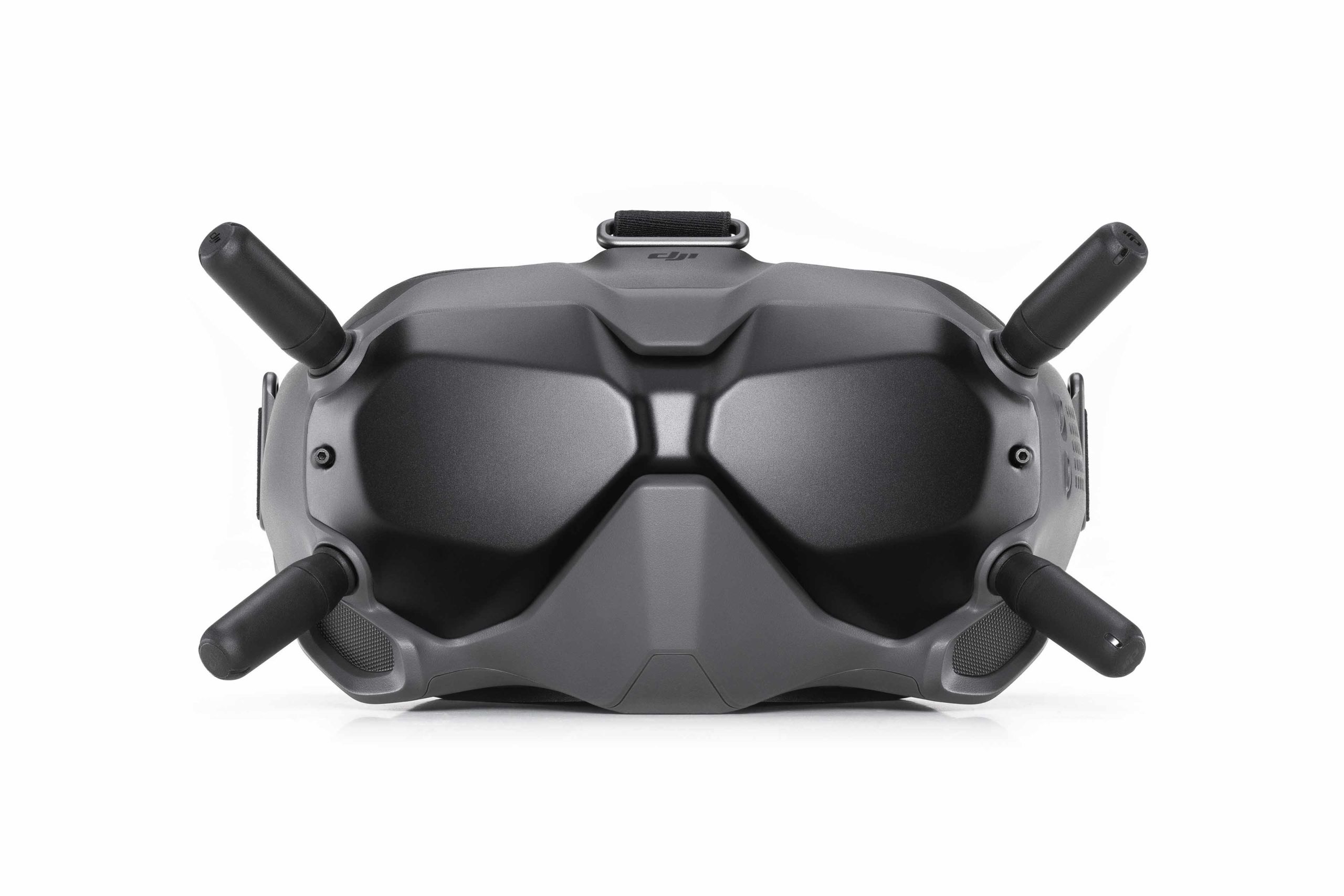
The second version of FPV goggles from DJIFPV drone, as indicated by the key features of the novelty. In particular, it is noted that thanks to the use of the DJI O3 technology (DJI OcuSync 3.0), it was possible to improve the quality of the video stream, reduce the delay, increase the broadcast distance and improve the noise immunity. As for the FPV hobbyDJI Digital FPV System and Caddx Nebula Nano Kit ”, but in this application V2 does not bring any particular improvements, at least for the time being (perhaps performance will be improved with subsequent firmware updates or a second iteration of compatible digital systems will appear). From which it follows that if you already have a DJI FPV Goggles V1, then it is not advisable to change them to V2.
Features
- Weight of FPV goggles (including antennas and strap) 420g
- Fully compatible with DJI Digital FPV System and Caddx Nebula Nano Kit
- Built-in DJI O3 video transmitter (DJI OcuSync 3.0)
- Operating frequency range: 2.400-2.4835GHz / 5.725 - 5.850GHz
- Video delay 28ms
- Remote control delay (DJI FPV RC) and video module (DJI FPV Air Unit) 7ms
- 1080P video recording at 60 fps
- FPV goggles: 2 × 1440 × 810 screens (each) with refresh rate 144Hz
- Max. angle of view (FOV): 150 °
- 3 × shooting modes
- Focus mode
- Audience mode
- 2 × video stream broadcast mode (Low Latency: 810P / 120 fps @ 28 ms; High-Quality: 810P / 60 fps @ 40 ms)
- 8 frequency channels for 8 participants in a simultaneous race
- Built-in micro SD port
- Instant viewing of recorded video through FPV goggles
- Adjustable IPD: 58-70 mm
- FPV goggles adapted for use with prescription goggles
- Added DJI FPV Goggles Battery (2S 1800 mAh 18 Wh LiPo) to power glasses (autonomy 1.5 h)







